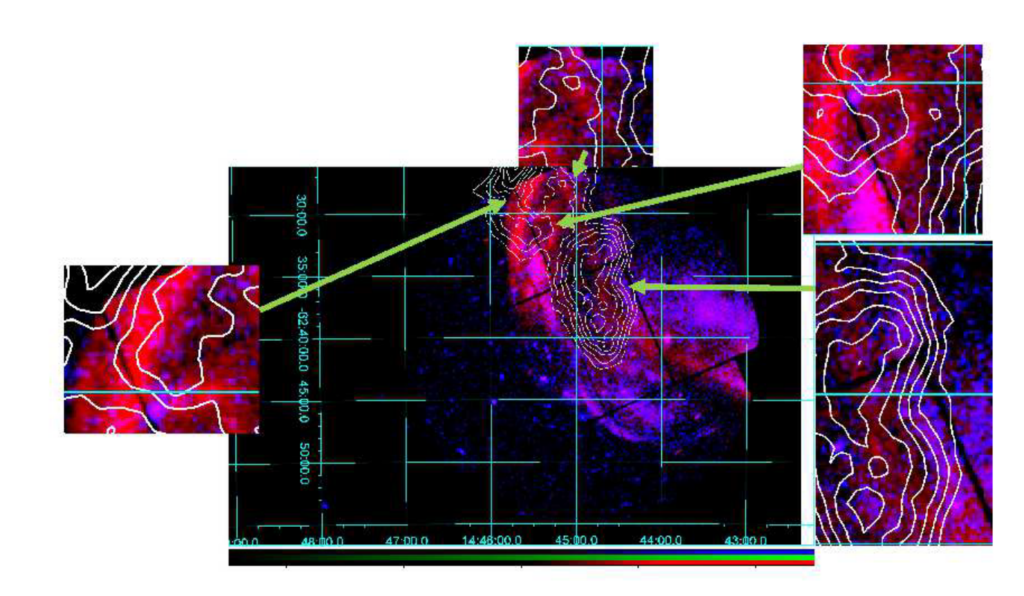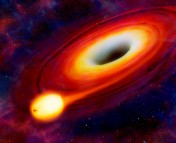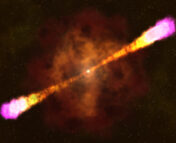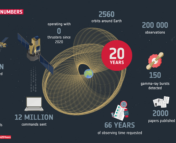Authors: Aya Bamba, Hidetoshi Sano, Ryo Yamazaki, Jacco Vink
First Author’s Institution: The University of Tokyo, Japan
Status: Accepted for publication in PASJ [open access]
Stars end their lives as the bright and ultra-energetic explosions known as supernovae. However, their story doesn’t end there. Astronomers are able to follow the post-mortem evolution of stars by studying supernova remnants, the strikingly beautiful clouds of gas and dust that emit across the electromagnetic spectrum, from radio waves to X-rays, that can persist for up to 100,000 years following a supernova.
While over 300 supernova remnants have been identified in the Milky Way, certain aspects of their evolution continue to perplex astronomers. For example, how does the environment into which a supernova remnant is born affect its production of X-rays? With this question as their motivation, the authors of today’s paper conducted an X-ray study of the galactic supernova remnant RCW 86, with the goal of understanding how particle acceleration in supernova shock waves is affected by interaction with neighbouring dense regions, such as 12CO molecular clouds or HI regions.
An Up-Close Look with XMM-Newton
To study the effects of the environment on supernova remnant evolution, the authors made use of an observation of RCW 86 from the X-ray space telescope XMM-Newton. The observation was conducted in 2014, and collected photons across two energy bands, namely the red (0.5 – 2.0 keV) and blue (2.0 – 8.0 keV) bands. The resulting image is shown in Figure 1.


Comparing the X-ray emission from RCW 86 and the location of the dense 12CO molecular clouds, it is clear that a relationship exists between the two. More specifically, the bright X-ray filaments in Figure 1 appear to enclose the molecular clouds. In addition, the filaments adjacent to the molecular clouds are redder than those that are more distant, indicating that the X-ray emission is softer, or less energetic, in the regions of the supernova remnant that are interacting with the molecular clouds.
But what about the bright red filament at the bottom right of RCW 86? To understand its cause, the authors also compared the X-ray emission to another type of dense region, called an HI region, seen in Figure 2. What they discovered was in line with their conclusions from their analysis of the nearby 12CO molecular clouds. The dense HI regions are enclosed by the bright, red filaments of RCW 86, with the more energetic, blue X-ray emission originating farther away from the HI regions.
What do the Spectra Tell Us?
Clearly, the regions of RCW 86 that are interacting with a dense environment such as a 12CO molecular cloud or HI region are redder, or less energetic. To better understand the effects of this interaction, the authors then extracted spectra from 13 different regions of RCW 86, and determined the best-fit model for each.

From their spectral fits, it became clear that the interacting and non-interacting regions of RCW 86 are producing X-rays via distinct mechanisms. This can be seen in Figure 3, which shows the ratio of thermal to non-thermal X-ray emission for the 13 regions they analysed. What the authors found was that interacting regions (the red filaments in Figure 1 and 2) have much greater thermal X-ray fluxes than non-interacting regions. This is indicated by the whiter colour of the interacting regions in Figure 3, compared to the more brown or orange colours of the non-interacting regions. In fact, since the colour bar is logarithmic, some of the interacting regions emit roughly 100 times more thermal emission than the non-interacting regions!
You might be asking, what is the difference between thermal and non-thermal X-rays? As the name suggests, thermal emission arises due to the extreme temperatures of supernova remnants, which causes them to emit X-rays. Non-thermal emission, on the other hand, results from the acceleration of particles. In the case of supernova remnants, this is typically synchrotron radiation, or radiation due to the gyration of charged particles in magnetic fields in supernova shock waves.
As the shocks of RCW 86 interact with dense regions, they begin to slow down. This leads to a density enhancement at the shock front as the ejected material begins to pile up due to the deceleration. This increase in density generates more thermal X-rays, while the non-thermal emission is reduced due to the slower shock speed. Thus, the association between interacting regions and higher ratios of thermal to non-thermal X-ray emission is in line with the physical mechanisms at play. Clearly, the environment into which a supernova remnant evolves can have profound effects on its production of X-rays. While this may come as a shock at first, for RCW 86, what you see is what you get.
Astrobite edited by Emma Clarke
Featured image credit: NASA




